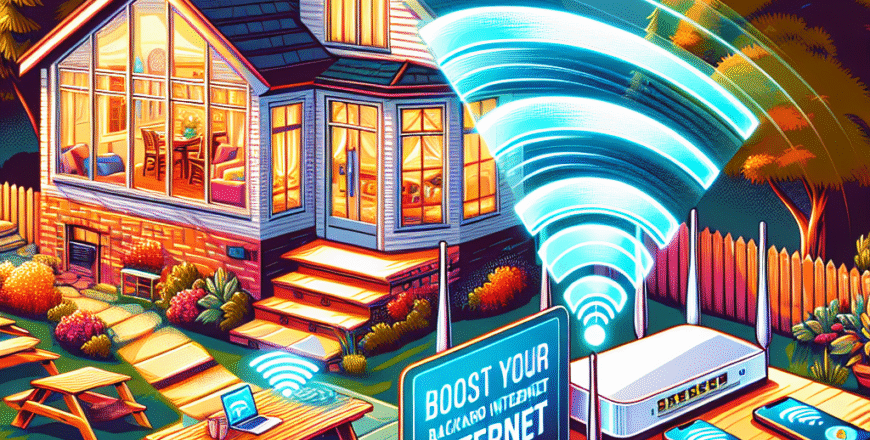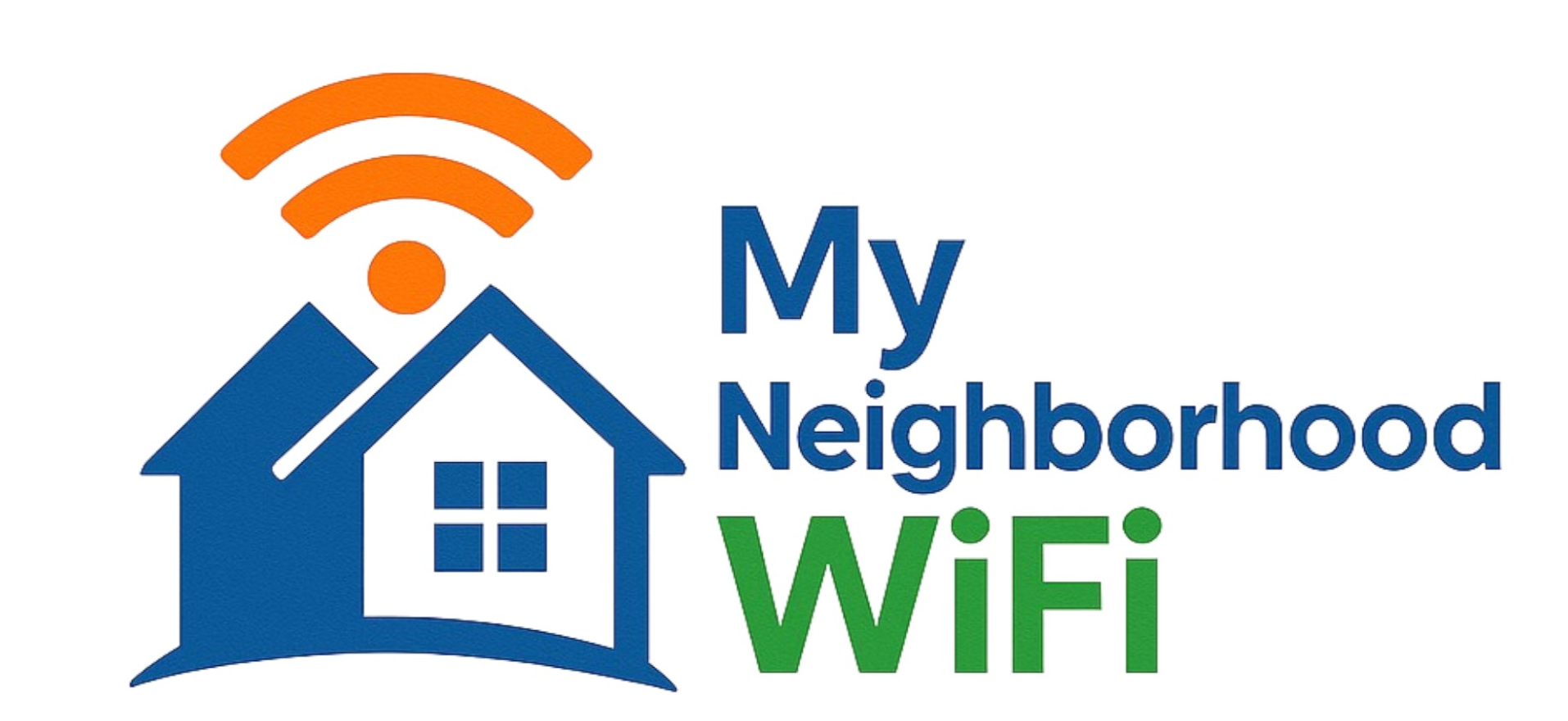
Boost Your Backyard Internet With Easy Tips to Extend Wi-Fi Outdoors
If you’ve ever tried to stream music, join a video call, or even scroll social media while relaxing on your patio or grilling in the backyard, you know the struggle—Wi-Fi outside can be frustratingly weak. The good news is that there are simple ways to boost your backyard internet and extend your Wi-Fi outdoors. You don’t need to be a tech expert, and most fixes don’t require spending a fortune. With the right setup, your backyard can become just as connected as your living room.
Why Wi-Fi Struggles Outdoors
Before we dive into solutions, let’s talk about why Wi-Fi is weaker outdoors. A Wi-Fi signal is essentially radio waves, and like sound, it gets blocked or weakened by walls, windows, and distance. Inside your home, your router has an easier time bouncing those waves around. But once you step outside, those obstacles multiply.
- Walls, brick, or concrete can block or weaken signals.
- Windows with metallic coatings reflect Wi-Fi waves.
- Distance from your router reduces signal strength.
- Interference from devices like cordless phones, microwaves, or even outdoor Bluetooth speakers can cause issues.
Understanding these challenges helps you pick the right fix for your home setup.
Easy Tips to Extend Wi-Fi Outdoors
1. Reposition Your Router
Sometimes, the simplest trick makes the biggest difference. If your router is buried in a corner closet, it’s no wonder the Wi-Fi drops off in your backyard. By moving your router closer to the wall facing the backyard—or even upstairs if you have a two-story home—you can immediately gain range outdoors.
- Aim for a central location close to your backyard side.
- Avoid placing routers on the floor. Higher placement helps signals travel farther.
- Keep it away from thick walls or objects like aquariums and large appliances.
2. Add a Wi-Fi Extender or Mesh System
If moving your router isn’t enough, adding extra gear can help. A Wi-Fi extender is a small device that repeats your router’s signal, effectively stretching it farther. For larger properties, mesh systems are even better—they create multiple points of connection around your home so there are fewer dead zones. According to a guide by ezeefiber.com, mesh networks are especially useful for consistent coverage in larger spaces where standard routers struggle.
3. Use the Right Antenna
Most routers have omnidirectional antennas, which spread signals evenly in all directions. But if your goal is targeting a specific outdoor spot, consider a directional antenna. These focus Wi-Fi in one direction, giving stronger coverage exactly where you need it. A detailed guide on antennas from deluisio.com explains how directional antennas are perfect for point-to-point connections, like sending Wi-Fi across a yard to a detached garage.
4. Consider Outdoor Wi-Fi Access Points
For the ultimate boost, look into outdoor-rated access points. These are designed to withstand weather while blasting Wi-Fi across open spaces like patios, gardens, or poolsides. They connect to your router via Ethernet cable indoors and extend a strong, dedicated network outdoors.
5. Limit Device Congestion
Even the best Wi-Fi setup struggles if too many devices are competing for the same bandwidth. As explained by ezeefiber.com, network congestion is like rush-hour traffic—too many devices slow everyone down. This is especially true if your household streams, games, and works online at the same time.
- Disconnect unused devices.
- Set your smart home devices to run on a different band if your router supports dual-band Wi-Fi.
- Use wired connections for devices that never move, freeing up Wi-Fi for portable ones.
6. Take Advantage of 5 GHz and 2.4 GHz Bands
Modern routers often support both 2.4 GHz and 5 GHz signals. The 5 GHz band is faster but doesn’t travel as far or through walls as well. The 2.4 GHz band is slower but stretches farther and penetrates walls better, making it more reliable outdoors. Choosing the right band for your outdoor needs is an easy way to keep connections stable.
Simple DIY Tricks Without Buying Extra Gear
Move Outdoor Furniture Wisely
Believe it or not, where you sit affects your Wi-Fi. If your favorite backyard spot is on the far side of the yard, it might be out of range. But staying closer to the side of the house where the router sits can make all the difference.
Avoid Signal Blockers
Metal objects, brick fireplaces, and even thick shrubbery can disrupt signals. If possible, clear the direct line between your router/booster and your backyard hotspot.
Use Your Phone’s Hotspot in a Pinch
If outdoor Wi-Fi is absolutely unusable, don’t forget your phone’s mobile hotspot feature. While it’s not a replacement for proper backyard Wi-Fi, it can save the day for small tasks like sending an email or streaming a quick song.
When to Upgrade Your Router
Sometimes, the problem isn’t your placement or setup—it’s the router itself. If it’s more than 4-5 years old, it likely doesn’t support the latest Wi-Fi standards. Modern routers with Wi-Fi 6 technology provide faster speeds, handle more devices, and improve connection stability overall as explained by netspotapp.com.
Signs Your Router Needs Replacing
- Speeds are much slower than what you pay for.
- You constantly need to restart the router.
- Newer devices can’t connect reliably.
How Far Can Wi-Fi Really Go Outdoors?
Wi-Fi range depends on your equipment and setup. Indoors, most routers cover about 150 feet. Outdoors, since there are fewer walls, the range can extend farther—up to 300 feet in some cases. However, environmental factors like trees, neighboring signals, or even weather can affect that distance.
| Wi-Fi Band | Average Outdoor Range |
|---|---|
| 2.4 GHz | Up to 300 feet (ideal for backyard coverage) |
| 5 GHz | Up to 100 feet (better speeds, shorter range) |
Creative Outdoor Wi-Fi Solutions
Connect a Detached Garage or Shed
If you want strong Wi-Fi in a shed, garage, or barn, run an Ethernet cable to those buildings and set up an additional access point. This ensures a rock-solid connection rather than relying on weaker range extenders.
Create an Outdoor Work-from-Home Setup
Working in the fresh air is great—until your Zoom call drops. To prevent that:
- Set up a dedicated mesh node near the backyard door.
- Connect essential work devices to the 2.4 GHz band for stability.
- Consider shade structures since excessive sunlight on devices can cause overheating.
Smart Gardens and Outdoor Devices
From outdoor cameras to smart sprinkler systems, many backyard gadgets depend on Wi-Fi. Ensuring smooth coverage means not only better convenience but also better security. If your smart devices show constant “offline” errors, it’s a sign your outdoor Wi-Fi needs a boost.
Apps and Tools to Check Wi-Fi Strength
Before spending money on upgrades, test your backyard signal strength. Simple apps available on both Android and iOS can show where your Wi-Fi is strongest or weakest. You can also explore Wi-Fi scanning tools that let you walk around your yard and visualize coverage. This can make it clear whether you need an extender or just a router move.
Final Thoughts
Your backyard should be an extension of your home—not a dead zone. By repositioning your router, considering extenders or mesh systems, and making a few small adjustments, you can transform your outdoor space into a fully connected retreat. Whether you’re streaming movies under the stars, powering up your smart garden, or just catching up on work emails, these easy tips will help ensure your outdoor Wi-Fi is as reliable as your indoor setup.
“Most inquiries are answered within the same day”



